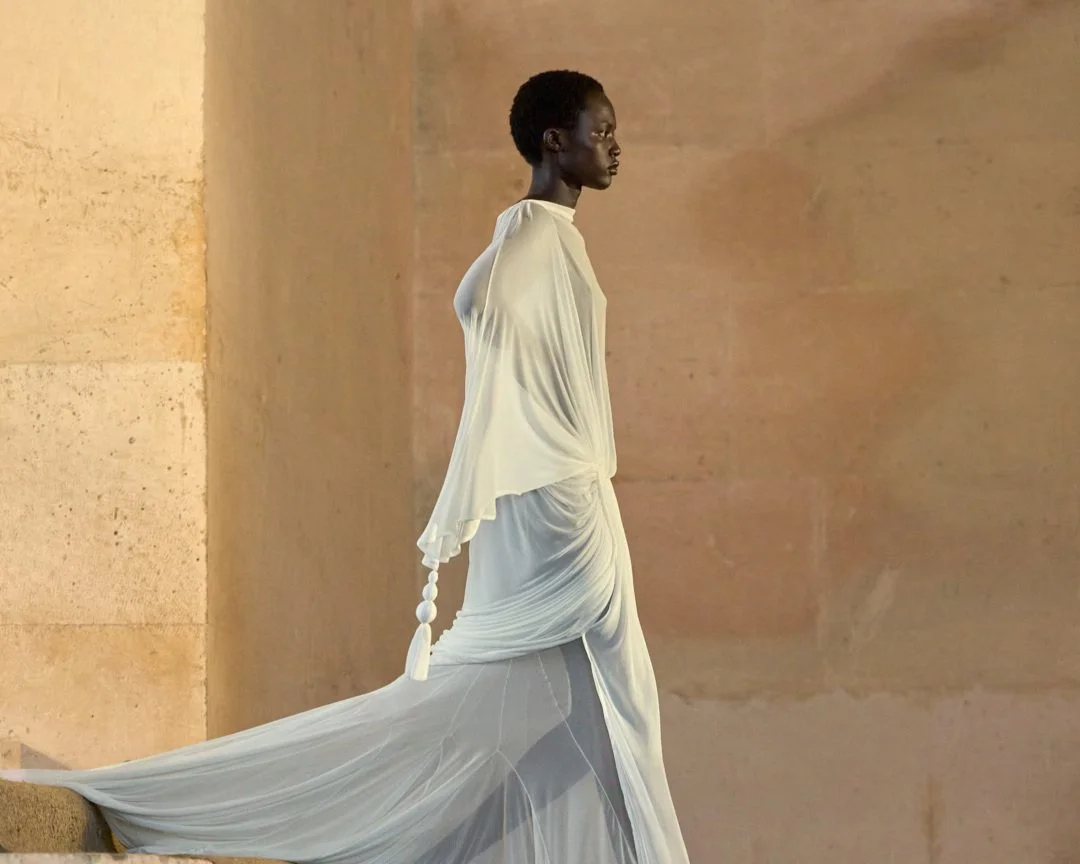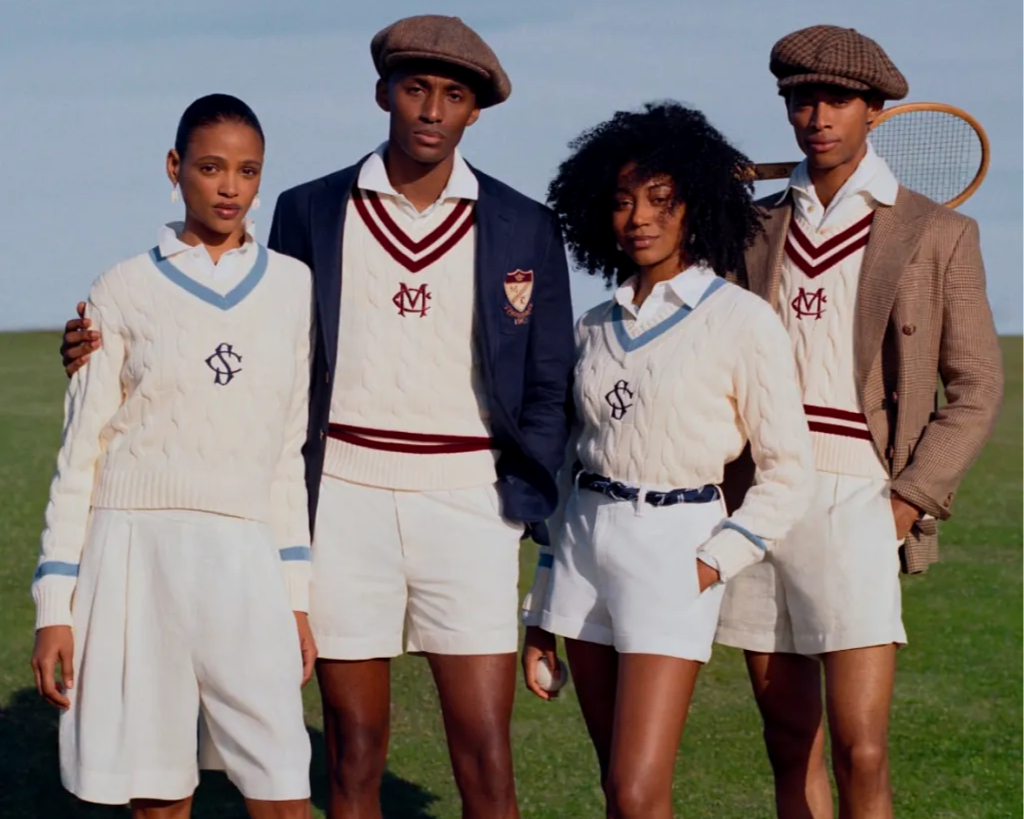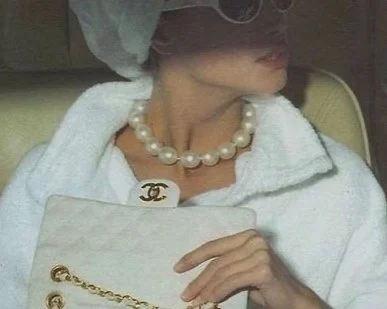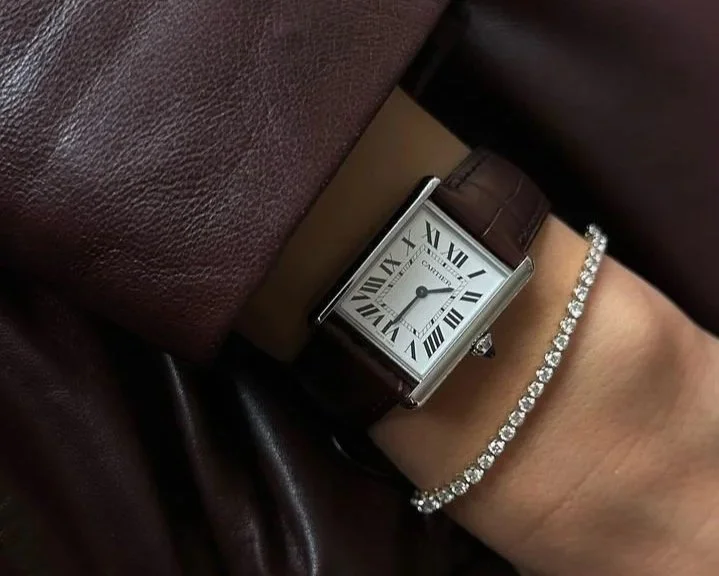The "Le Paysan" Collection by Jacquemus: An Ode to Origin
During a season of spectacle and overstimulation, Jacquemus offered something radically different with his SS26 ready-to-wear collection.
Stillness set the tone for Le Paysan (the peasant), where Simon Porte Jacquemus invited us not into fantasy, but into memory. This was a pastoral memoir—a rural reverie expressed through sculpted silhouettes and softened hues.
At a moment when fashion chases novelty at every turn, Jacquemus looked inward—and backward—crafting a world rooted in ancestry and reverence for the land. This was more than nostalgia. It was a refined invocation of where he comes from, and who he still is beneath the acclaim.
Elevate Your Life
Take our conscious luxury course and turn your life into a masterpiece of majestic moments — tailored to your distinct tastes and personal preferences.
Between Field and Palace
The show unfolded at L’Orangerie in the gardens of the Château de Versailles—a space suspended between the grandeur of court life and the humility of cultivation. Before the first model appeared, a barefoot child opened towering doors to the runway, casting himself as a stand-in for the young designer. The symbolism was poetic: we were not being shown a collection, but being invited into a recollection.
Rural Romance with Restraint
Jacquemus’s aesthetic was pared back, but never plain. The silhouettes were structural, almost architectural, yet softened by the palette—chalky whites, oatmeal, blush, buttercream, and pale sage. The overall effect was meditative. This wasn’t fashion designed to provoke, but to observe.
Volume played a starring role: tented skirts, apron-like wrap pieces, cropped jackets with pastoral curvature. Each form drew inspiration from traditional rural garb, but transformed it with couture-level precision. Smocks became sculptural. Aprons became abstract. Even the simplest shift dress held tension between past and present.
Precision in Every Fold
The garments spoke in a hush, letting construction and proportion carry the conversation. Everything hinged on material and craftsmanship. What made the collection particularly resonant was its creative discipline. Nothing felt extraneous. The choices were a mastery of editing as much as designing.
Tailored jackets draped with clarity, cotton skirts held volume like breath, and sheer overlays created rhythm in motion. Every hem, pleat, and panel was considered—not for spectacle, but for quiet strength. The restraint was rigorous, the execution exacting.
Meaning Not Merchandising
Even the accessories served as poetic gestures, less as props and more as punctuation. These were not products. They were artifacts of a provençal life, reframed through the lens of quiet luxury.
Soft carryalls, simple headscarves, and grounded footwear mirrored the garments' ethos: useful, beautiful, and unburdened. They were not loud, not logoed, not meant to sell fancy, but support a story. Each piece felt anchored to a lifestyle, not a trend cycle.
In Le Paysan, Jacquemus achieved something rare: a show that felt both intimate and transcendent. It was not trying to define the season. It was simply defining him. There is a particular courage in choosing subtlety in a boisterous world. And there is power in moderation—especially when paired with such commanding artistry.
Rather than disrupt, Jacquemus distilled. And in doing so, he reminded us that fashion is not always about reinvention. Sometimes, it is simply about returning—to one's roots, to what is essential, and to what silently endures.




























